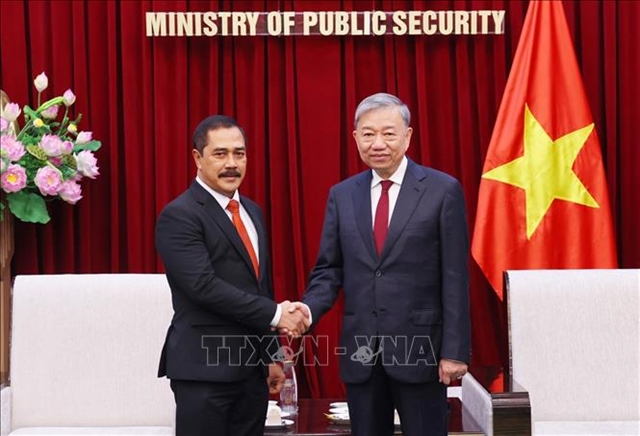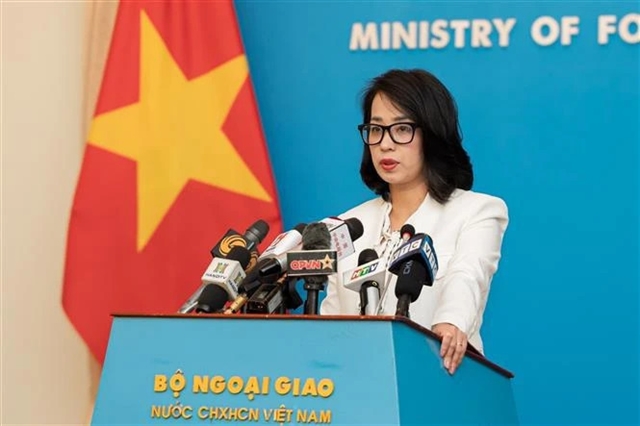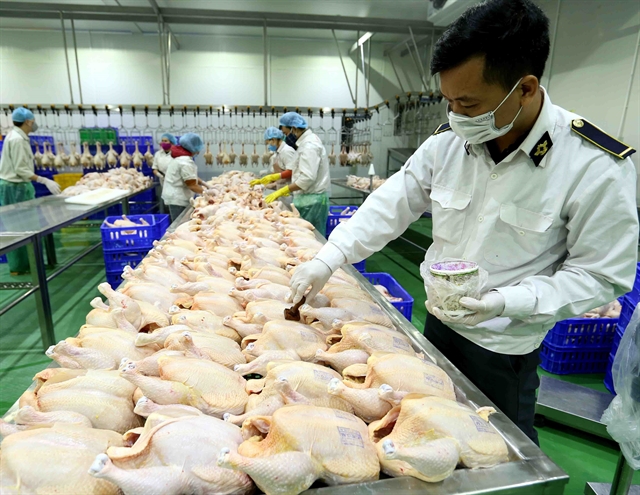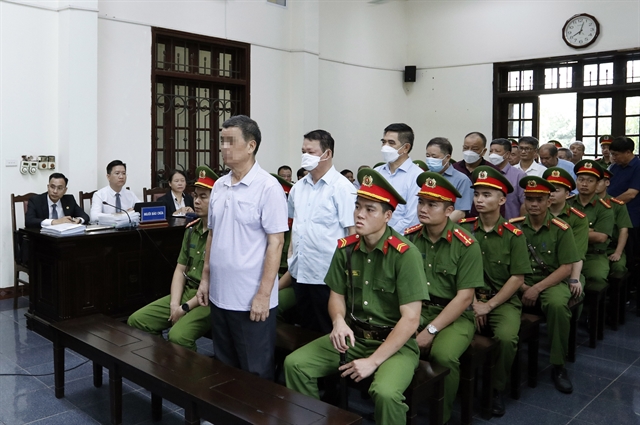 Society
Society

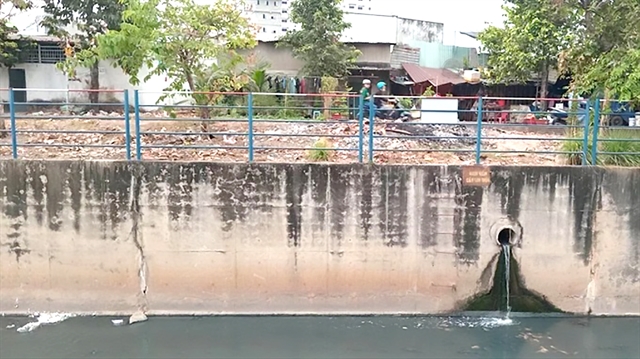
|
| Domestic wastewater from nearby residential areas in Thủ Đức city’s Linh Trung Ward is released into Nhum Stream. — Photo www.sggp.org.vn |
HCM CITY — HCM City has been trying to eliminate water pollution in its canals in order to improve the living environment for local inhabitants.
The drainage route of the Cái, Nhum and Xuân Trường streams and Ba Bò Canal at the border area between the city and Bình Dương Province has been treated with various pollution mitigation measures.
Accordingly, Ba Bò Canal received more than VNĐ1 trillion (US$39.4 million) for solid concrete embankment construction.
Yet the canal water has always been too smelly. This is because many domestic wastewater pipes installed by local residents pour sewage directly into the canal.
A similar situation can be found in Nhum Stream, whose water is constantly black and stinking from sewage of nearby residential areas.
Trần Văn Đang, a resident living near a bridge on Provincial Highway No. 43 in Thủ Đức city’s Bình Chiểu Ward, said he and his neighbours had hoped to have an improved living environment after the renovation of Ba Bò Canal.
Nevertheless, the foul smell from the canal’s black water is still haunting them since domestic and industrial wastewater that has not been properly treated is continuously poured into the canal, severely affecting the health of dwellers here, especially the elderly and children.
The water quality of Cái, Nhum and Xuân Trường streams and Ba Bò Canal dropped slightly last year, according to Bình Dương Province’s Department of Natural Resources and Environment.
Organic pollution still exists here mostly due to untreated sewage from households in Bình Hòa Ward of Thuận An city in the province, and near the dormitory of Việt Nam National University - HCM City.
According to Vietnamese standards, in Ba Bò Canal, 75 per cent of the locations do not satisfy the BODS parameter, 25 per cent the DO parameter, 75 per cent the COD parameter, and 100 per cent the coliform parameter.
The figures for Cái, Nhum and Xuân Trường streams are all 100 per cent, which is really worrisome.
Ngô Quang Sự, director of the province’s Department of Natural Resources and Environment, said that despite warnings by local authorities against illegal waste disposal into canals and efforts of functional teams to clean the surface of these canals, many citizens, mostly street vendors and passersby, still throw garbage carelessly.
Many households near Ba Bò Canal do not have their sewage pipes connected to urban sewage treatment plants owing to tardiness in the Nhum Stream drainage project as the land clearance task cannot be finished.
Nguyễn Thị Thanh Mỹ, deputy director of the city Department of Natural Resources and Environment, said the city is going to inspect local residents, businesses and factories.
The public land will be reviewed to allocate suitable locations for the installation of automatic monitoring stations in the area between the two localities.
Bình Dương Province’s People’s Committee chairman Võ Văn Minh said the province is increasing its monitoring over Sóng Thần 1 and Sóng Thần 2 industrial parks regarding sewage treatment tasks via monitoring camera systems, automatic monitoring stations, and automatic sample collection devices.
It will also cooperate with Army Corps 4 to identify sewage arising from the unit’s operations.
Bùi Xuân Cường, vice chairman of the city People’s Committee, said the city is inspecting all possible sources pouring out wastewater and is closely monitoring environment law observation by manufacturers and businesses as well as industrial parks along these canals.
It assigned its Construction Department to continue the project to fight against urban flooding and to treat sewage in the 2020-45 period, including accelerating the construction of Northern Saigon Wastewater Treatment Plant No.1 and Northern Saigon Wastewater Treatment Station No.2.
The Department of Planning and Investment is tasked to attract more investment for these two important facilities.

|
| Domestic wastewater from nearby residential area in Thủ Đức City’s Bình Chiểu Ward is released into Ba Bò Canal. — Photo www.sggp.org.vn |
To address water pollution in bordering areas between HCM City and Long An Province, the city’s Department of Natural Resources and Environment is requested to collaborate with its counterpart from Long An Province to develop a pollution control plan for the 2024-30 period.
Accordingly, the two localities must strictly watch over pollution sources, share surface water monitoring data twice a month at bordering locations on Thầy Cai and An Hạ canals, and Cần Giuộc and Bến Lức - Chợ Đệm rivers, as well as in industrial clusters and businesses normally releasing a large amount of sewage.
They also share inspection results and practical solutions while maintaining a special communication hotline for timely co-operation to handle law breaking cases.
The city’s Construction Department is assigned to develop the flood control and wastewater treatment project in the 2020-45 period, the flood control and wastewater treatment project plan in the 2020-30 period.
The Department of Planning and Investment must promote investments in the construction of wastewater treatment plants, while the Department of Agriculture and Rural Development is in charge of implementing regulations related to managing, exploiting, and protecting irrigation projects for the Thầy Cai - An Hạ canal route.
The Irrigation Service Management and Operation One-Member Co. Ltd. is responsible for dredging sediment and collecting garbage for the above canal route.
The Urban Infrastructure Construction Investment Project Management Board is tasked to speed up the construction of a wastewater collection system and a corresponding treatment plant in the basin.
The districts of Củ Chi, Hóc Môn, Bình Chánh, Bình Tân and 8 are asked to update current wastewater sources under their charge and ensure all wastewater meets the applicable standards before being released into the environment. — VNS

